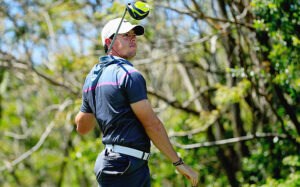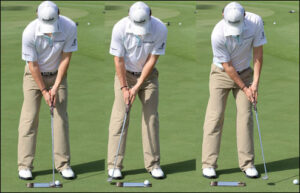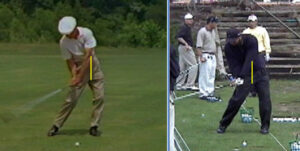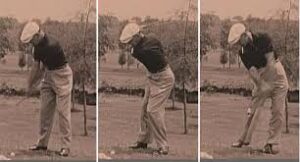We are all looking for information and products that will improve our games. That’s why I developed GOLFSTR to help me learn a straight leading arm golf swing. [My transition from a bent leading arm baseball swing was killing my game.] There are hundreds of Golf Training Aids that promise to help you improve your swing. Are you wasting your money on hogwash stories for products that have no impact on improving your game?
Don’t be fooled. Companies with deep pockets can create wonderful ads with endorsements to generate huge sales for products that really have limited value for your game. I have recently seen a few examples of major advertising campaigns on products which have limited value for your game.
Example #1: A putter with a .8 inch raised white bar on Its center-line: This product was advertised by a well-recognized promoter of golf products. Their story was all BS from an engineering point of view. The ad claimed that lining up your eyes with the straight wall of the white bar on the putter would keep your head lined up exactly over the putter. Unfortunately for this to be true your head (about 4 feet above your putter) would have to be at least 10 degrees off line from directly above the putter if you could actually see that far. Hogwash!
Example #2: A Wide Based Wedge: There are a number of ads being run showing recognized trainers praising this amazing product. I saw one of the first training videos released as a blog showing Hank Haney trying to teach a golfer how to use the wide based wedge. He only hit 1 good shot out of the 10 swings that were shown in the video. It really was a mistake releasing this blog as it proved that it is not as easy to use as it appears.
The fact remains that you have to fit the leading edge of the club under the ball every time to create lift. If you don’t have a perfect swing every time you will shank the ball or dig your club into the ground. Conventional wedges can be used to open and close the face of the club to control trajectory and spin. That was my first clue that the wide based wedge was not going to be the great solution that they claim. I suspect that thousands of these clubs will be sold and stored in basements around the world. Isn’t advertising wonderful?

Transition to the correct swing requires stretching exercise and patience. Learn it in slow motion and then make it happen.
GOLFSTR+ Is a Game Changer
This Training Aid will only help those who WANT to improve their game by swinging like a professional. It was developed to help me learn to swing with a straight leading arm. Then 5 different professionals (including Michael Breed, Golf Channel PGA Instructor) made suggestions and inspired me to offer GOLFSTR not only with 1 but 6 swing fixes. Hence the name: GOLFSTR+.
Some of the GOLFSTR+ swing fixes lock your wrist and others act as a reminder. It takes practice and stretching exercises to allow your body to correctly swing a golf club. It will change your game forever. Buy one today at www.golfstr.com








